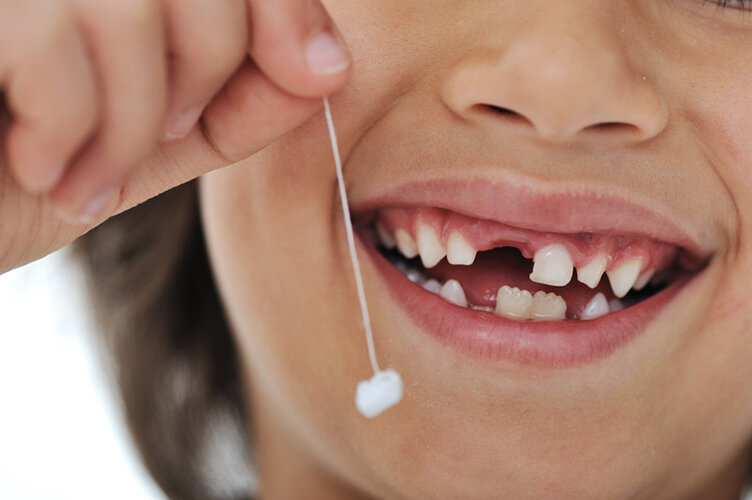Why Are My Child’s Baby Teeth Not Falling Out?
Parents often worry that something is wrong when a child’s baby teeth do not fall out as expected. Although there are some developmental issues which require professional attention, most of the time everything is just fine. What should parents expect when it comes to their children losing baby teeth?
Baby teeth play an important role in dental development
Baby teeth serve several purposes besides chewing. Primary teeth give rise to the permanent teeth and preserve space for them until they are developed enough to come in. If the baby teeth come out too early, space can be lost causing crowding of the underlying permanent ones. At the other extreme, baby teeth that are not lost on time can force the permanent ones to come in crooked creating a more difficult orthodontic condition.
There can be problems if baby teeth are lost too early
The most common reasons for primary teeth to be lost early are decay, trauma, and crowding. If a tooth has to be pulled because of disease or is lost due to trauma, your dentist is usually already involved. If the teeth are crowded, your child may lose two primary teeth naturally to accommodate the eruption of a single larger permanent tooth. If baby teeth are lost prematurely, an orthodontist should be consulted to see if a space maintainer is needed.
Baby teeth that don't fall out can also indicate problems
There are several conditions which prevent the baby teeth from falling out on schedule. If the underlying teeth are crowded, they may not be able to push out the overlying baby teeth. Baby teeth with no underlying permanent replacements may be retained indefinitely. Extra teeth can block the normal eruption of the regular permanent ones. With a simple x-ray, your orthodontist can tell you if there really is a problem or if your child is just developing slowly.
A two-year "pause" in losing baby teeth is normal
The most common reason for parents’ concern however is just misunderstanding the normal sequence of tooth loss in their developing child. The first baby teeth are usually lost at about six years of age. Some children may lose theirs as early as five or as late as seven and neither variation is a problem. By age eight, the average child will have lost eight baby teeth; four front teeth on top and four front teeth on the bottom. Again, a variation of a year in either direction is nothing to worry about. Between the ages of eight and ten there is not much change in the number of teeth. In other words, it is normal for a child to lose eight teeth in a row and then stop for about two years! (It is during this two-year “pause” that it is best to provide interceptive orthodontic treatment if it is needed.) Around ten years of age the remaining teeth begin to loosen and fall out. The average adolescent loses their last primary tooth before they are 13 years old. The 12-year-molars also make their appearance during that 12th year (hence the name).
Most questions about delayed tooth loss come during that two year span between eight and ten where no teeth are lost. Such inactivity is unexpected by parents but completely normal. In my practice I don’t worry about delayed tooth loss unless I can see that 1) the retained primary teeth are causing problems for the incoming permanent ones, 2) the 12-year molars are already erupted, or 3) the delayed tooth loss will cause orthodontic treatment to be started at an awkward age (i.e. the junior and senior years of high school). An important service that your orthodontist can provide is monitoring the dental development of your child and counseling with you about the need to have primary teeth removed if that should be necessary.
NOTE: The author, Dr. Greg Jorgensen, is a board-certified orthodontist who is in the private practice of orthodontics in Rio Rancho, New Mexico (a suburb on the westside of Albuquerque). He was trained at BYU, Washington University in St. Louis, and the University of Iowa in the United States. Dr. Jorgensen’s 25 years of specialty practice and 10,000 finished cases qualify him an expert in two-phase treatment, extraction and non-extraction therapy, functional orthodontics, clear aligners (Invisalign), and multiple bracket systems (including conventional braces, Damon and other self-ligating brackets, Suresmile, and lingual braces). This blog for informational purposes only and is designed to help consumers understand currently accepted orthodontic concepts. It is not a venue for debating alternative treatment theories. Dr. Jorgensen is licensed to diagnose and treat patients only in the state of New Mexico. He cannot diagnose cases described in comments nor can he select treatment plans for readers. Because he has over 25,000 readers each month, it is impossible for him respond to all questions. Please read all of the comments associated with each article as most of the questions he receives each week have been asked and answered previously. The opinions expressed here are protected by copyright laws and can only be used with written permission from the author.

